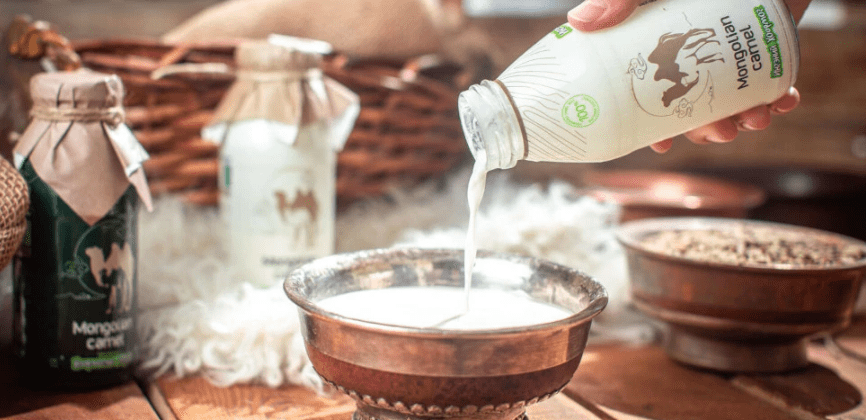Mongolia, with its vast steppes, nomadic heritage, and rich history, is a land of adventure and wonder.
But beyond its stunning landscapes and fascinating culture lies a culinary tradition that is just as intriguing and diverse. If you’ve never tasted Mongolian food, you’re in for a treat.

The Essence of Mongolian Food
Mongolian food is a reflection of the country’s nomadic lifestyle and harsh climate. The cuisine is built around the staples that have sustained nomads for centuries—meat, dairy, and grains.
Think hearty, warming dishes that provide sustenance during long, cold winters and energy for days spent herding livestock.
Simple Ingredients, Big Flavors
At the heart of Mongolian cooking are simple, readily available ingredients. While the ingredient list may seem basic, the flavors are anything but.
- Meat: Beef, mutton, and horse meat are common. Meat is typically boiled or grilled.
- Dairy: Milk, yogurt, cheese, and butter are all integral, thanks to the abundance of livestock.
- Grains: Wheat and barley are used to make bread and noodles.
Unique Cooking Techniques
What sets Mongolian food apart is not just the ingredients but how they are prepared. Traditional cooking techniques include:
- Boiling: A simple but effective method that preserves the natural flavors of meat.
- Grilling: Often done using hot stones, grilling imparts a smoky, earthy flavor.
- Fermentation: Dairy products are often fermented to create unique flavors and textures.
Must-Try Mongolian Dishes
Ready to dig in? Here are some quintessential Mongolian dishes that you absolutely must try.
Buuz – The Beloved Dumpling
Buuz are steamed dumplings filled with minced meat (usually mutton or beef), onions, and sometimes garlic. They are a favorite during the Tsagaan Sar (Lunar New Year) celebrations but are enjoyed year-round.
Why You’ll Love It:
- Juicy meat filling
- Soft, doughy exterior
- Perfect comfort food
Khuushuur – The Deep-Fried Delight
Similar to buuz, khuushuur are deep-fried dumplings that offer a crispy alternative. Usually larger than buuz, they are filled with seasoned meat and are a popular street food.
Why You’ll Love It:
- Crispy, golden-brown crust
- Succulent filling
- Great on-the-go snack
Tsuivan – Noodle Heaven
Tsuivan is a stir-fried noodle dish mixed with meat and vegetables. It’s a hearty meal that combines the chewiness of homemade noodles with the savory goodness of meat and veggies.
Why You’ll Love It:
- Chewy, satisfying noodles
- Flavorful meat and veggies
- One-pot meal
Dairy Delights
Mongolia’s dairy products are a category all their own. From creamy yogurt to the tangy airag (fermented mare’s milk), these dairy staples are deeply rooted in Mongolian culture.
Airag – The Fermented Beverage
Airag is a fermented drink made from mare’s milk. It’s slightly alcoholic and has a tangy, sour taste. It’s a traditional beverage that plays a significant role in Mongolian hospitality.
Why You’ll Love It:
- Unique, tangy flavor
- Slight kick from fermentation
- Cultural significance
Aaruul – The Nomadic Snack
Aaruul is dried curd cheese, often shaped into bite-sized pieces. It’s a portable, long-lasting snack that’s perfect for nomadic life.
Why You’ll Love It:
- Tangy, chewy texture
- High in protein
- Easy to carry
Suutei Tsai – The Comforting Milk Tea
Suutei tsai is a traditional Mongolian milk tea made with green tea, milk, salt, and sometimes butter. It’s a comforting beverage that warms you up from the inside out.
Why You’ll Love It:
- Creamy, savory taste
- Warming and comforting
- Perfect for cold days
Mongolian food might not be as well-known as other Asian cuisines, but it’s packed with unique flavors and history. Its simplicity, combined with hearty and robust flavors, makes it a cuisine worth exploring.
Whether you’re enjoying a plate of buuz or sipping on suutei tsai, Mongolian food offers a glimpse into the rich cultural tapestry of Mongolia.
Hungry for more?
Try recreating these dishes at home and immerse yourself in the culinary traditions of Mongolia. And if you’re looking for expert guidance, consider joining a cooking class or following a Mongolian food blog for more tips and recipes. Happy cooking!




